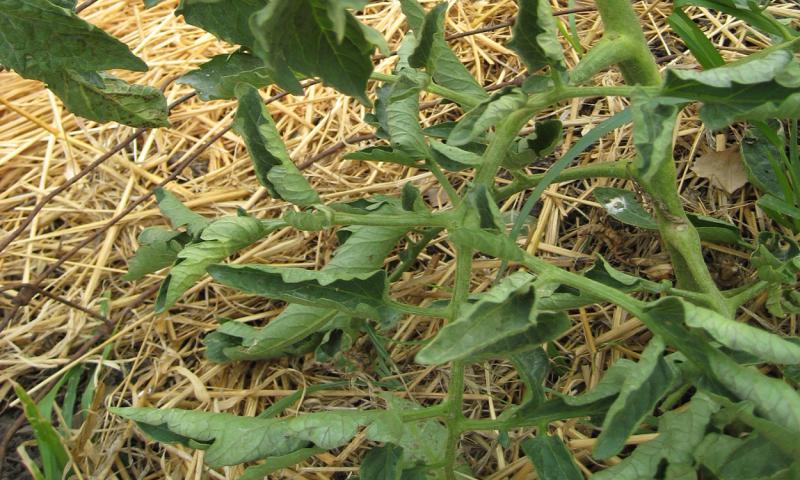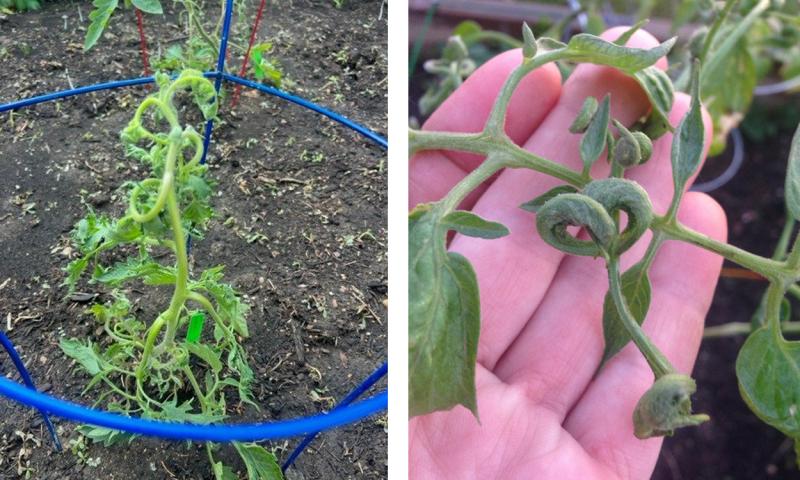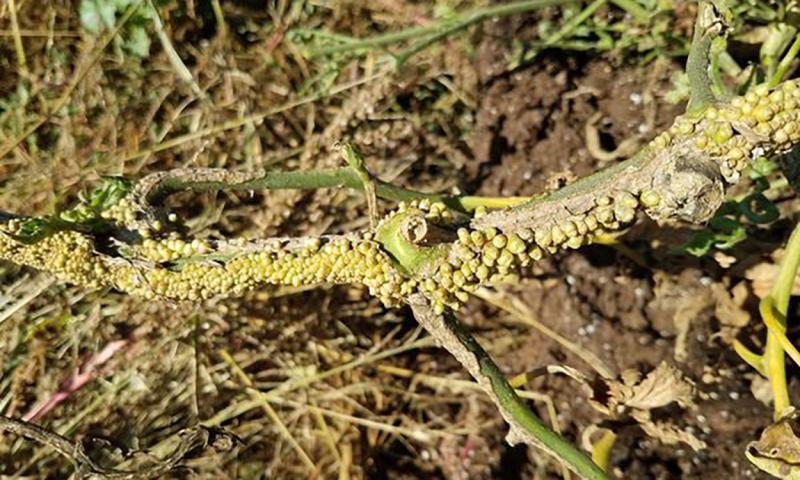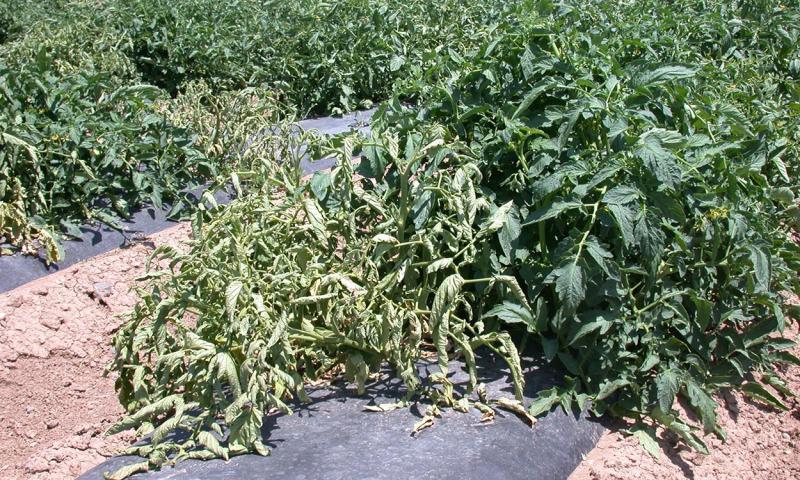Written by Rhoda Burrows, former Professor & SDSU Extension Horticulture Specialist.
Rolled up leaves on tomatoes are a common occurrence in South Dakota, especially under our ever-changing weather conditions. The causes can vary, from a plant attempting to decrease water loss from its leaves, to exposure to chemicals that are distorting the plant’s growth. Learn some of the differences between the various causes for this common, but disconcerting symptoms.
Physiological Leaf Rolling

Physiological leaf rolling is the term used to describe when the plant, for any number of reasons, is unable to supply adequate water to the leaves, and the leaves respond by rolling inward lengthwise, reducing the surface area exposed to sun and wind. Often the lower leaves are affected first, and the leaves retain their normal color and shape (if flattened out), although they may become a bit leathery (Figure 1).
Indeterminate tomato varieties may be a bit more prone to physiological leaf rolling, and high-yielding cultivars tend to be more susceptible. The symptoms usually disappear as environmental conditions change, and the plant will yield normal fruit. Sometimes curling may be a response to severe pruning, especially if plants have been heavily fertilized with nitrogen. It may also be a response to too much water (like most plants, tomatoes do not like soggy roots).
Herbicide Exposure

Herbicide exposure can cause curling leaves on tomatoes. Dicamba and 2,4D are commonly used on both lawns and field crops in South Dakota, and they can drift for a mile or two, especially if applied on a breezy day, or during temperature inversions.
Tomatoes are very sensitive to these herbicides; they may show symptoms when no other plants in the area appear to be affected and at very low doses.
Unlike the curling of physiological leaf rolling, the tips often curl in along with the sides, so that they form C-shaped structures, sometimes unrecognizable as leaves apart from their color (Figure 2).
Often these tightly curled structures will feel rubbery to the touch. The leaf shape is usually distorted as well, so that one cannot flatten the leaf to a normal shape.

Other plant symptoms can include stem curling, adventitious roots initials (small bumps) along the stem (Figure 3), flower or fruit loss, or malformed fruit.
There are no remedies for herbicide exposure. One study found that the herbicide in the plant tissue decreased over time after exposure to 2,4D, dropping particularly sharply in the first month, but that traces remained throughout the growing season and could be found in the fruit, albeit at low levels. In another study, dicamba levels dropped over two months post-exposure, but remained only at higher initial levels of contamination.
Exposure closer to harvest would result in higher levels throughout the plant, including the fruit. There is no level of dicamba that is considered safe for consumption in tomatoes.
Viruses

Viruses can cause leaf rolling that may be confused with the above causes. These may be difficult to diagnose without a laboratory test, as the cultivar, the timing of infection and the environmental conditions can all cause variable symptoms. Tobacco Mosaic Virus (abbreviated as TMV) can cause crinkled and distorted leaves, and slight upward leaf curling; it will also have mottled mosaic color patterns on the leaves. Beet Curly Top Virus (abbreviated as BCTV) can cause leaves to roll upwards with downward curling petioles, but they will also turn a dull-yellow color with purplish veins (Figure 4). Severely infected plants can be stunted and yellowed; infection is generally very sporadic. This virus is transmitted by beet leafhoppers, which are rarely seen in South Dakota, preferring warmer, drier climates. They also resort to feeding on tomatoes only if more-preferred plants, such as lambsquarter and sugar beets, are not available. Plants infected with viruses cannot be treated; they should be removed, so their infection does not spread to other plants.


